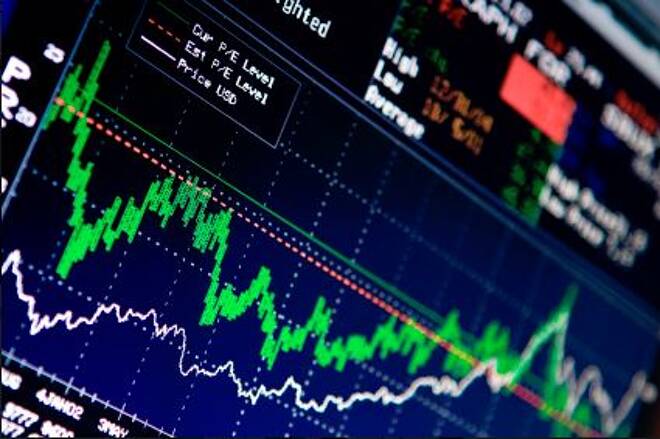Advertisement
Advertisement
Volatility Continues as Tensions Remain High
By:
European stock markets are selling off after a sharp drop in Asia ex Japan overnight. Japan was on holiday and so far, escaped the fallout from
European stock markets are selling off after a sharp drop in Asia ex Japan overnight. Japan was on holiday and so far, escaped the fallout from intensifying rhetoric between the U.S. and North Korea, but the Hang Seng closed with a loss of -2.04%, the CSI 300 lost -1.85% and the ASX -1.18%. The selloff continued in Europe with the DAX outperforming as investors head for safety. Still, even the DAX is down on the day and is settling in to close below the 1200 mark for the first time since April. Eurozone peripheral markets are underperforming as Italy and Spain bond, as well as stock markets, are punished by the rise in risk aversion.
U.S. VIX equity volatility surged over 30% to clear 15.00 and is up to 16.47 which is a 3-month high after taking out 15.16 highs from June 29th, having cleared the 11.98 200-day moving average earlier this week. On Friday, it took out the 16.30 highs from April/May which could now target the 23 level as speculative VIX short interest could help take out the November highs.
German Inflation Was in Line with Expectations
German July HICP inflation was confirmed at 1.5% year over year, unchanged from the preliminary number and from June. The national CPI rate meanwhile was confirmed at 1.7% year over year, up from 1.6% year over year in the previous month. Annual heating oil price increases picked up again in July, and overall household energy rose 0.7% year over year, after falling -0.1% year over year in June. Food price inflation meanwhile fell slightly back, although at 2.7% year over year it remains at high levels. Overall the German HICP rate remains above the Eurozone average, as the labor market is looking increasingly tight and the number of vacancies rose to post-unification highs. Still, even the German HICP rate is clearly below the ECB’s upper limit for price stability and the data won’t change the ECB’s cautious stance on tapering as it prepares it heads for yet another QE program when the current schedule ends at the end of the year.
French HICP inflation was confirmed at just 0.8% year over year, national CPI stood at an even lower 0.7% year over year in July. A confirmation of the preliminary numbers that leaves the French headline rate not just clearly below the ECB’s upper limit for price stability, but also far below the Eurozone average. The gap of 0.7% points between the German and the French HICP rates highlights the ECB’s problem as so far inflation rates haven’t converged to an extent officials had hoped at the start of the monetary union. Meanwhile, payrolls and wage data for the second quarter show that the trend of improving labor markets, but sluggish wage growth remains unchanged, leaving Draghi time to ponder his options for the future of the QE program which currently is only scheduled until the end of the year.
About the Author
David Beckerauthor
David Becker focuses his attention on various consulting and portfolio management activities at Fortuity LLC, where he currently provides oversight for a multimillion-dollar portfolio consisting of commodities, debt, equities, real estate, and more.
Did you find this article useful?
Latest news and analysis
Advertisement
